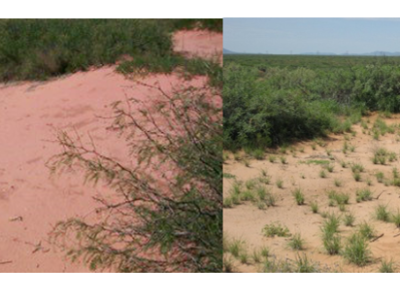
Insights into Vegetation Change
Insights into Vegetation Change
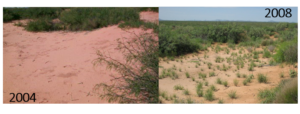
2004 mesquite dunelands without grasses and 2008 mesquite dunelands with perennial grasses.
Credit: Jornada LTER
The shift from grassland to shrubland is not the only alternative state for desert vegetation. Jornada Basin LTER research has documented: (a) shifts from desertified shrublands back towards native grassland, (b) shifts between different shrubland types, and (c) shifts from grasslands or shrublands to novel ecosystems dominated by non-native annual or perennial grasses. State changes depend on wind and water movement patterns, spatial variation in soil and vegetation type, and triggers such as multiple years of precipitation at levels above or below long-term average.
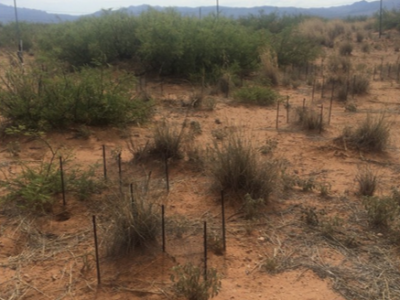
Connectivity Plays a Key Role in Vegetation Dynamics
Connectivity Plays a Key Role in Vegetation Dynamics
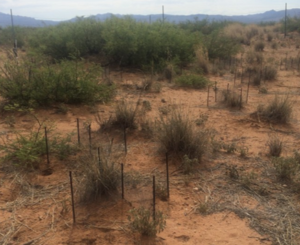
Connectivity modifying structures (ConMods) trap and retain wind-transported seeds and organic material, reducing connectivity and facilitating local recruitment.
Credit: Jornada LTER
Locations that are functionally connected in the landscape experience greater materials and energy transfer, which ultimately influences spatial and temporal vegetation dynamics in desert landscapes. In pilot studies, small connectivity modifying structures (ConMods) increased grasses and forbs relative to areas without ConMods.
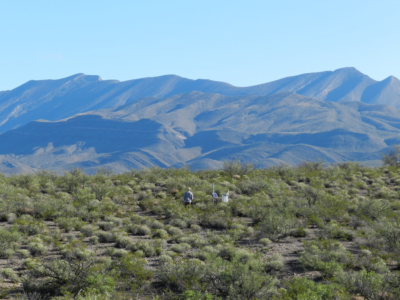
Sources of Groundwater Recharge
Sources of Groundwater Recharge
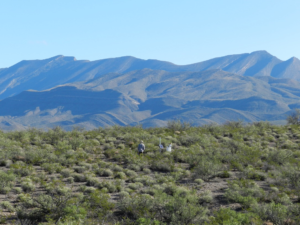
Researchers conduct fieldwork in the Chihuahuan Desert of New Mexico.
Credit: ASU
Using long term observations and a water balance approach, JRN LTER researchers determined that small watersheds on piedmont slopes are large contributors to groundwater recharge on the Jornada Basin. This was one of the first studies to quantify groundwater recharge in arid region first-order watersheds.
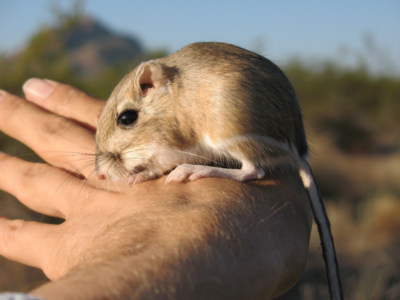
Rodent Biomass Linked to Precipitation
Rodent Biomass Linked to Precipitation
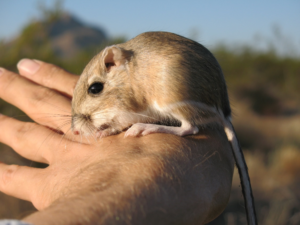
Kangaroo Rat
Credit: John Anderson
Desert rodent biomass depends on an interaction between shrub cover and precipitation – more rodent biomass is associated with grasslands following droughts and with shrublands following wet years. This pattern can be largely explained by the irruption of folivores (which prefer shrubbier vegetation) during wet years and suggests that rodent population dynamics are likely to change following climatic shifts.
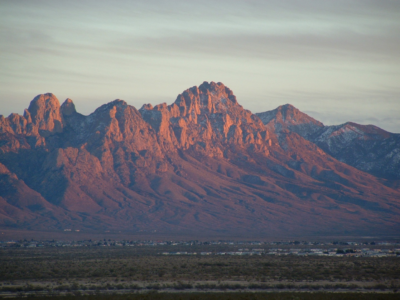
The Power of “Big Data”
The Power of “Big Data”
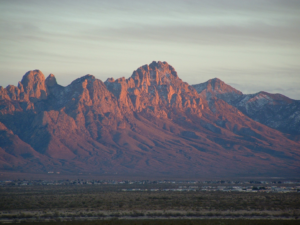
Organ Mountains-Desert Peaks National Monument
Credit: Curtis Monger
Researchers at JRN LTER are incorporating machine learning into complex dataset exploration. The data exploration interface is capable of suggesting potential analytical approaches to new users based on interactions with previous users.










